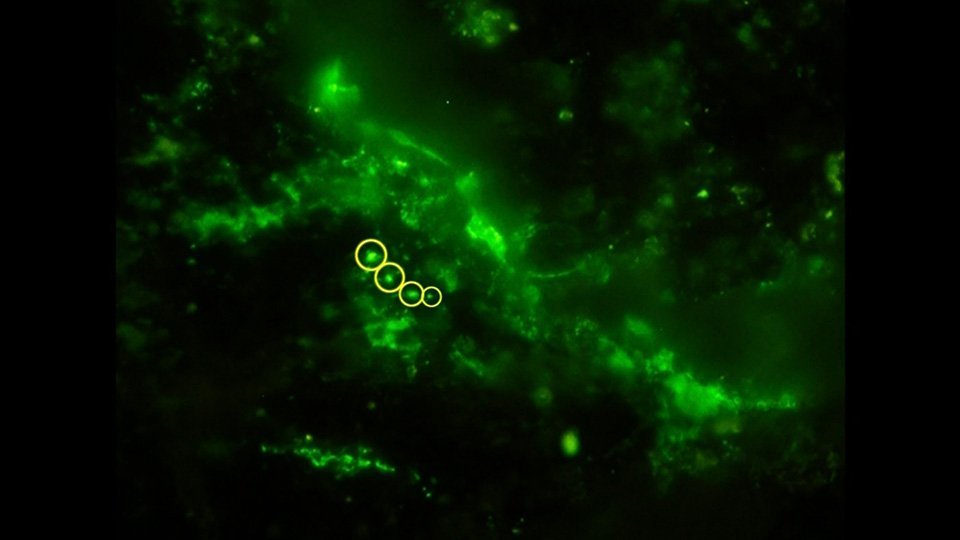In a breathtaking discovery, scientists have found living colonies of microbes nestled within a rock sample estimated to be 2 billion years old.
Unearthed from the Bushveld Igneous Complex in South Africa, this finding sets a new record for the oldest living organisms found in ancient rock.

Until this revelation, the oldest known living microorganisms were discovered in a mere 100-million-year-old deposit beneath the ocean floor.
The Bushveld Igneous Complex is a vast rocky formation, roughly the size of Ireland, famed for its wealth of ore deposits, including 70% of the planet’s mined platinum.
This massive intrusion formed as magma cooled below the Earth’s surface and has experienced minimal changes since its formation.
As such, it has provided stable conditions that allowed ancient microbial life to persist for billions of years.
These remarkable tiny life forms, residing far below the Earth’s surface, are living at an extraordinarily slow pace.
Their metabolic rates are staggeringly low, enabling their survival over such prolonged geological timescales.
The team’s research offers an unprecedented glimpse into early life on Earth and has exciting implications for astrobiological pursuits as well.
The breakthrough stems from a meticulous study conducted by the team led by Yohey Suzuki, associate professor at the University of Tokyo.
The researchers obtained a 30-centimeter-long core sample of rock from 15 meters beneath the ground with the assistance of the International Continental Scientific Drilling Program.
Upon analysis, living microbial cells were found densely packed in fractures within the rock and sealed from external influences by clay-filled gaps.
To ensure the microbial cells were truly native to the ancient rock sample and not contaminants from the drilling or inspection processes, the team utilized a sophisticated technique developed previously.
This approach involved staining the DNA of the microbial cells and employing infrared spectroscopy to analyze both the proteins in the microbes and the surrounding clay.
These measures allowed them to confirm the authenticity of this ancient microbial life.
The significance of this discovery stretches far beyond Earth. As Suzuki pointed out, “I am very interested in the existence of subsurface microbes not only on Earth but also the potential to find them on other planets.”
With NASA’s Mars rover Perseverance on a mission to return rock samples of a similar age, the prospects for discovering microbial life in Martian rocks seem promising.
This serves as an exciting harbinger for potential astrobiological findings beyond our planet.
Published in the journal Microbial Ecology, this study not only marks a new milestone in our understanding of life on Earth, but also opens up intriguing possibilities for exploring life across the cosmos.
